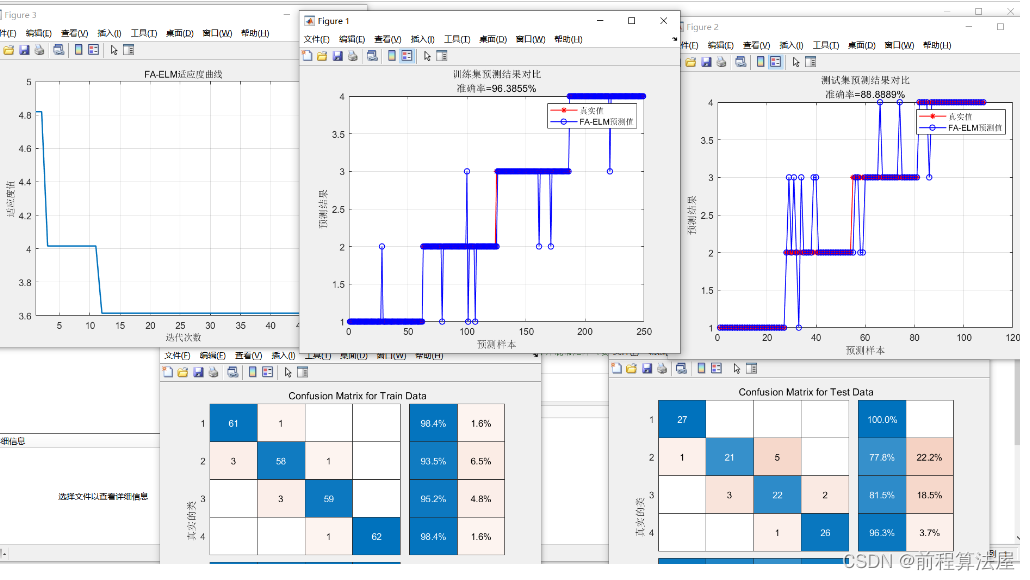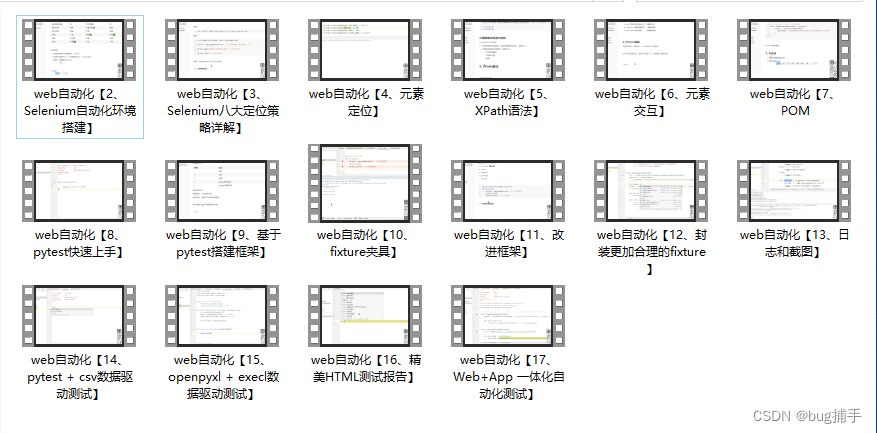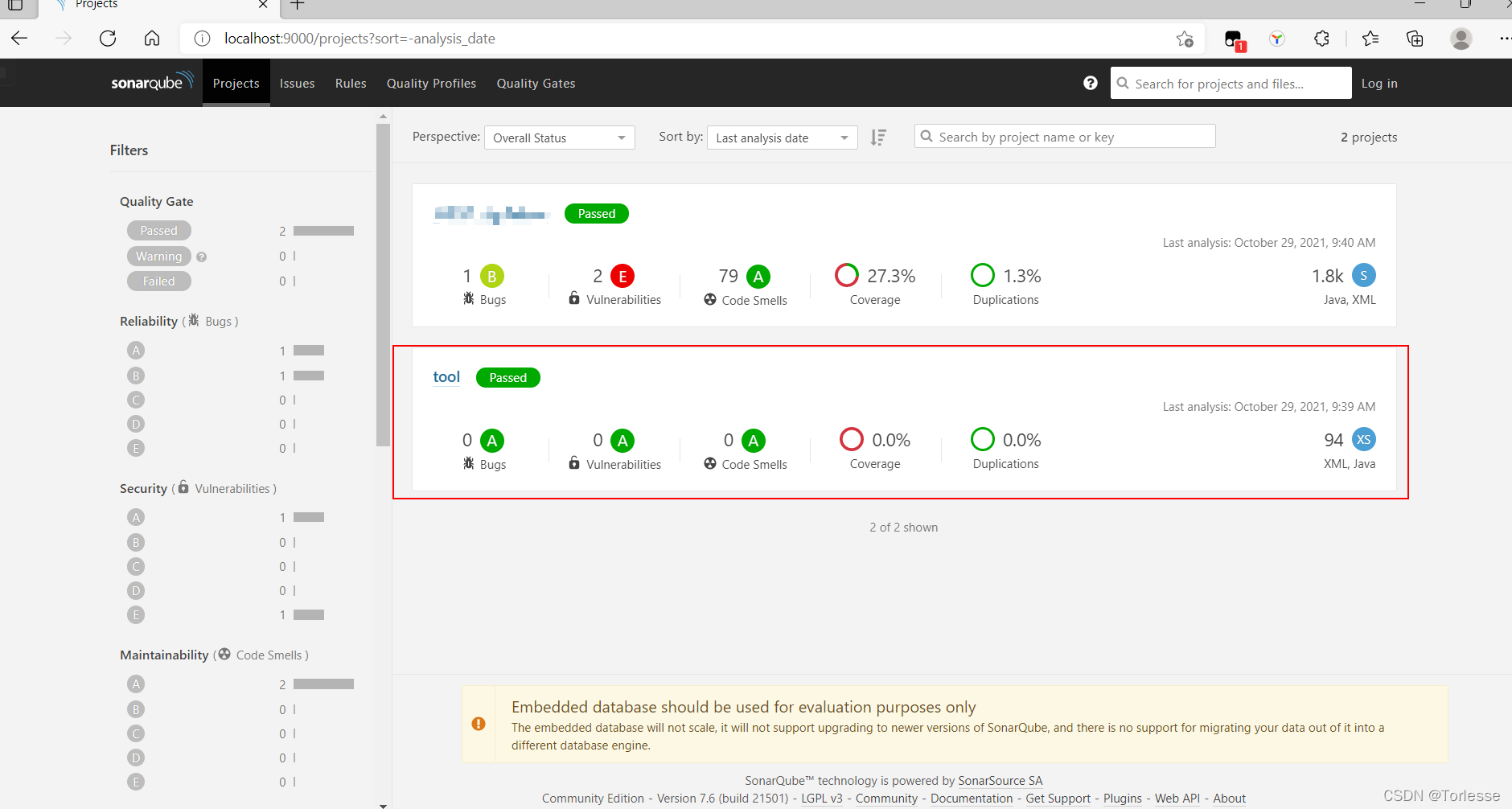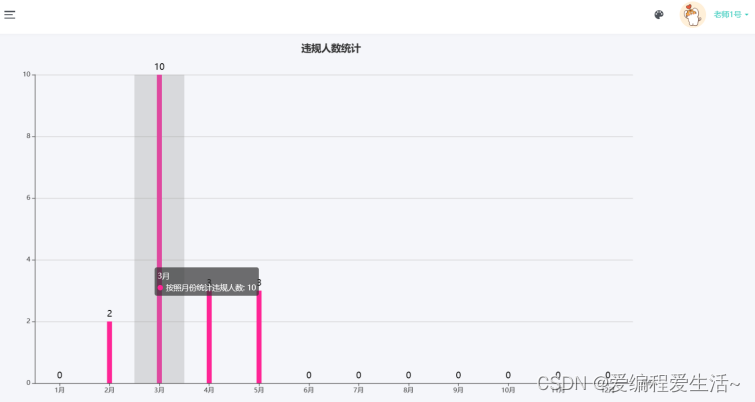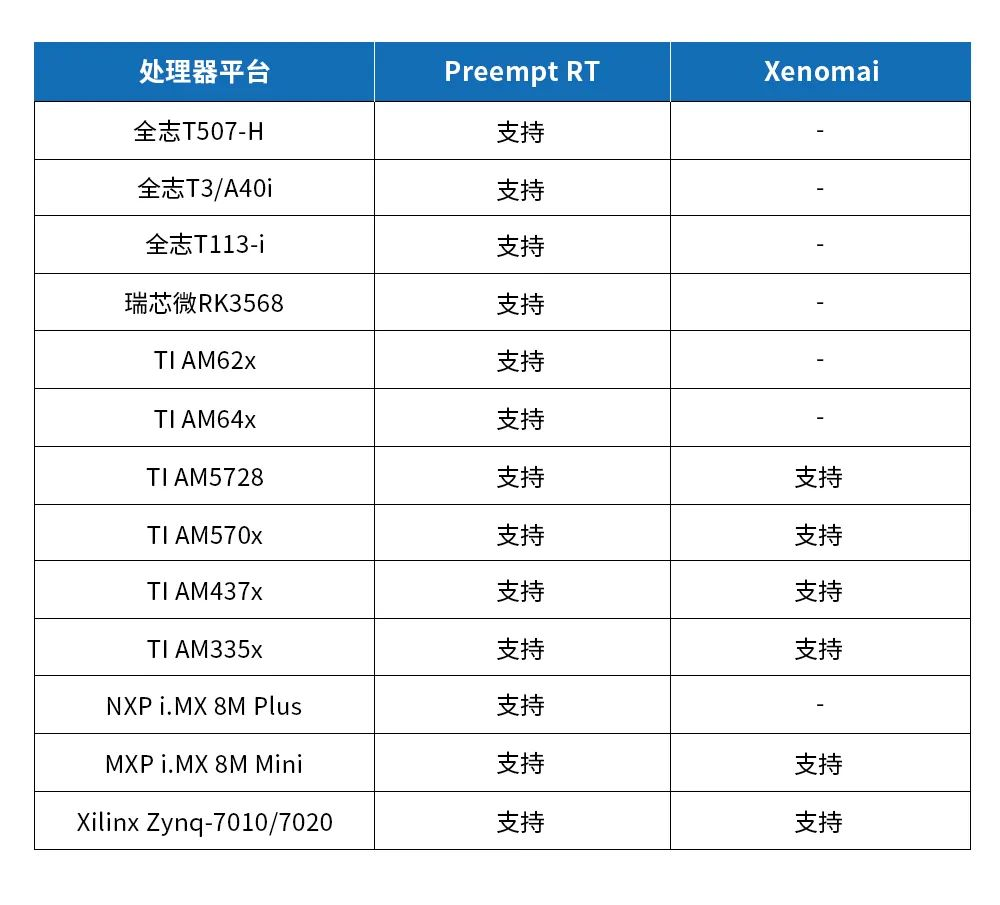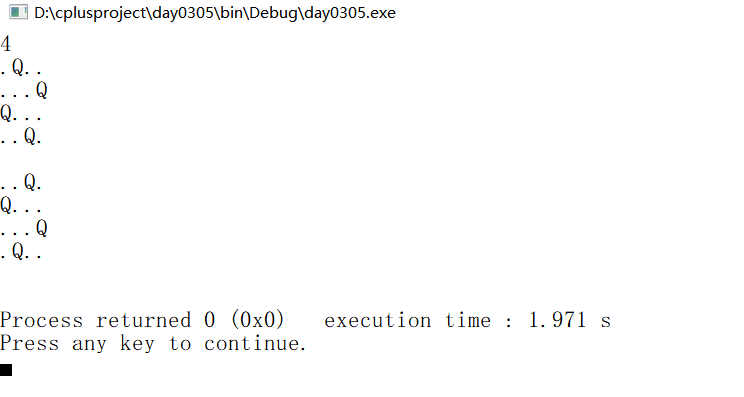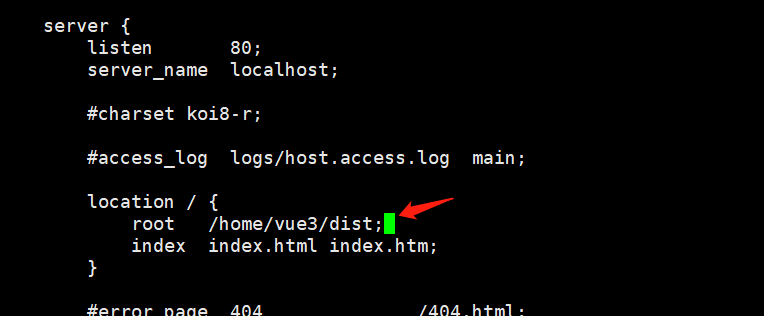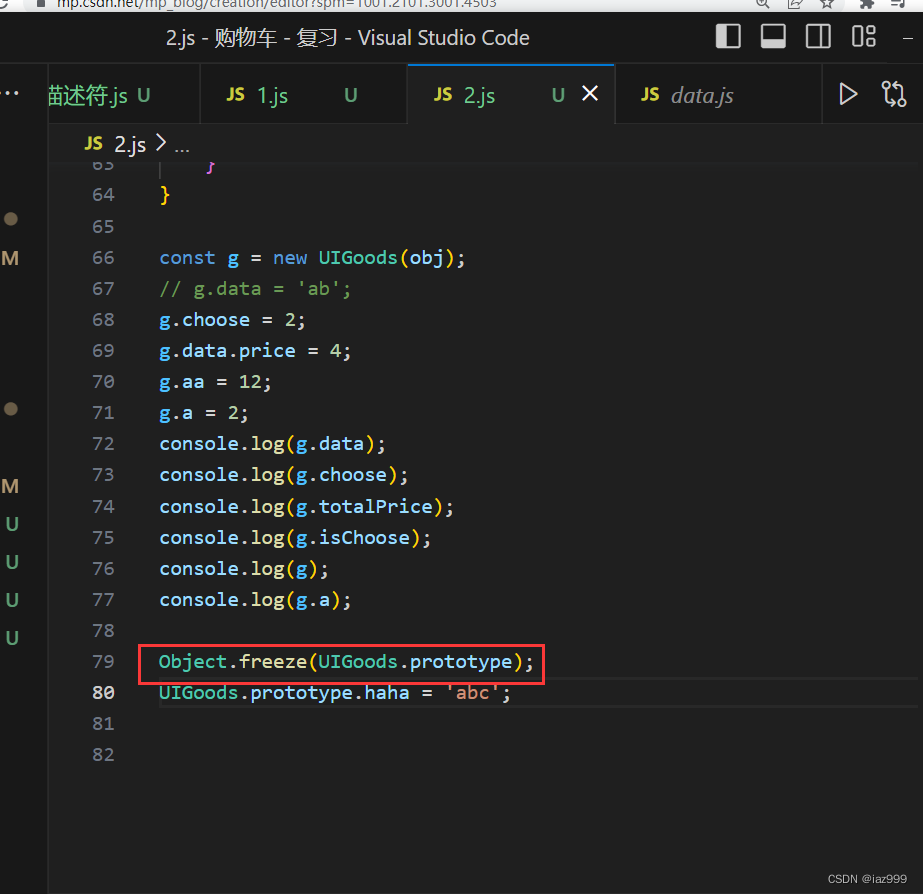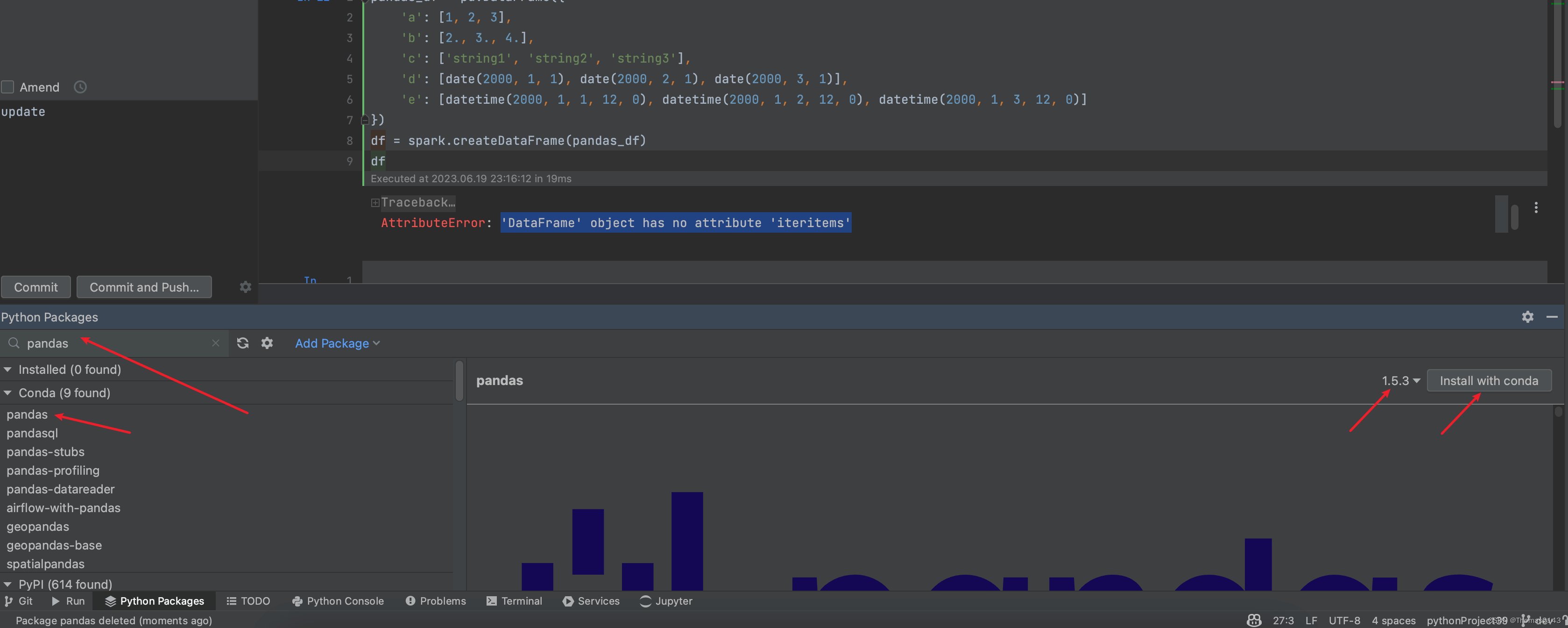🎊专栏【 前端易错合集】
🍔喜欢的诗句:更喜岷山千里雪 三军过后尽开颜。
🎆音乐分享【如愿】
大一同学小吉,欢迎并且感谢大家指出我的问题🥰
文章目录
- 🍔实现如图的导航栏
- ⭐代码
- 🎄注意
- 🍔事件代理
- ⭐效果
- ⭐代码
- 🎄分析
- 🤖先看前一段代码
- ⭐添加点击后框框变成红色的效果
- 🍔轮播图
- 🎄分析
- 🍔效果如图
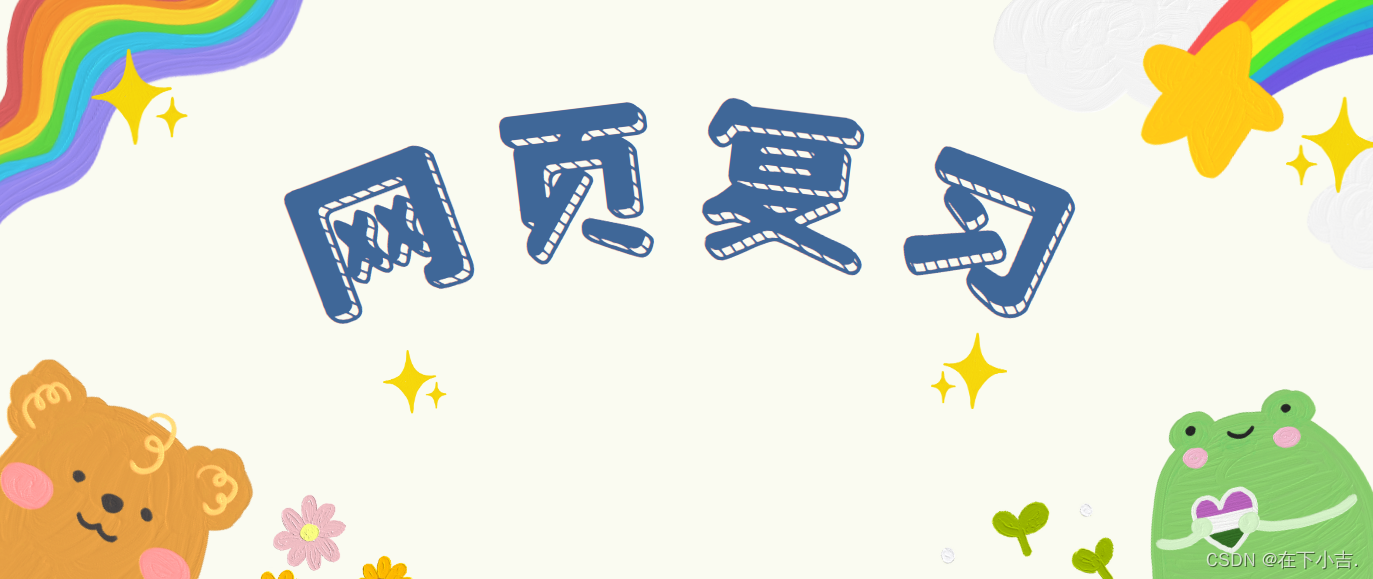
🍔实现如图的导航栏
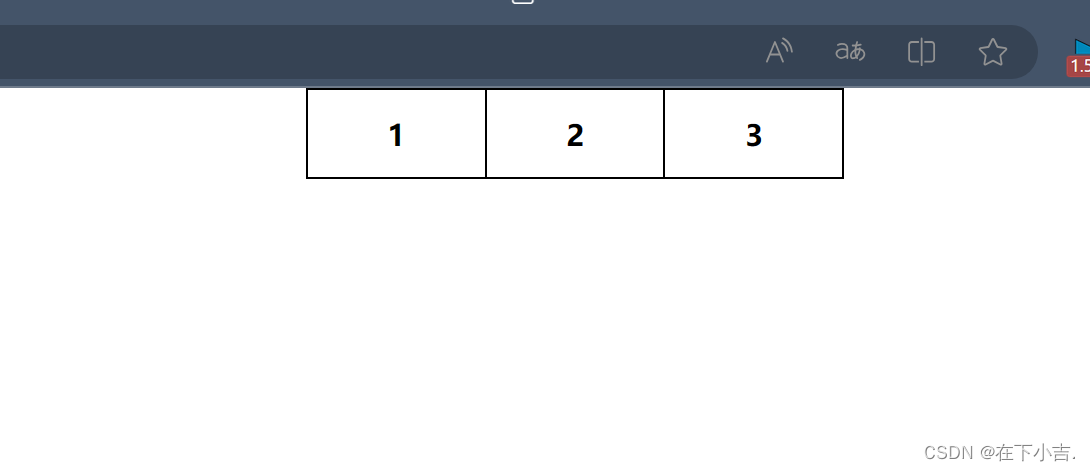
⭐代码
<!DOCTYPE html>
<html lang="en">
<head>
<meta charset="UTF-8">
<meta name="viewport" content="width=device-width, initial-scale=1.0">
<title>Document</title>
<style>
* {
margin: 0;
padding: 0;
}
li {
box-sizing: border-box;
float: left;
display: block;
line-height: 50px;
width: 100px;
height: 50px;
text-align: center;
font-weight: bold;
list-style: none;
color:black;
border: 1px solid;
text-decoration: none;
}
div{
border: 1px solid black;
margin: 0 auto;
width: 300px;
height: 50px;
}
</style>
</head>
<body>
<div>
<ul>
<li>1</li>
<li>2</li>
<li>3</li>
</ul>
</div>
</body>
</html>
🎄注意
- 一定要给边框设置为
border: 1px solid;而不是border: solid,要指定大小 - 因为外盒子是300px,三个内盒子都是100px,而且
边框也有1px,为了防止冲突,要设置为box-sizing: border-box;,这样子可以自动调整大小
🍔事件代理
⭐效果
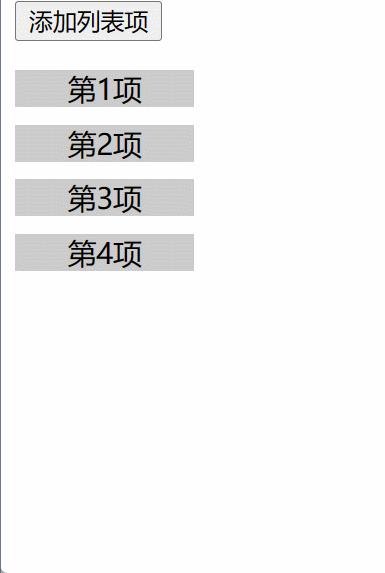
⭐代码
<!DOCTYPE html>
<html lang="en">
<head>
<meta charset="UTF-8">
<title>Document</title>
<style>
.menu {
width: 100px;
padding: 0;
list-style: none;
}
.menu li {
margin: 10px 0;
text-align: center;
background-color: #ccc;
cursor: pointer;
}
</style>
</head>
<body>
<input type="button" value="添加列表项" onclick="addLi()">
<ul class="menu">
<li>第1项</li>
<li>第2项</li>
<li>第3项</li>
<li>第4项</li>
</ul>
<script>
function addLi() {
var ll = document.createElement("li");
ll.innerHTML = "新增的列表项";
document.querySelector(".menu").appendChild(ll);
}
//事件委托:将事件监听委托给祖先元素(一般委托给父元素)
//事件委托实现的原理是利用事件冒泡
//1.先获取到ul
var ul = document.querySelector('.menu');
//2.为ul添加click事件
ul.onclick = function (e) {
if (e.target.nodeName == 'LI')
e.target.style.backgroundColor = 'red';
};
</script>
</body>
</html>
🎄分析
对于这样子的代码,特别是js
我的建议是
分开来看
🤖先看前一段代码
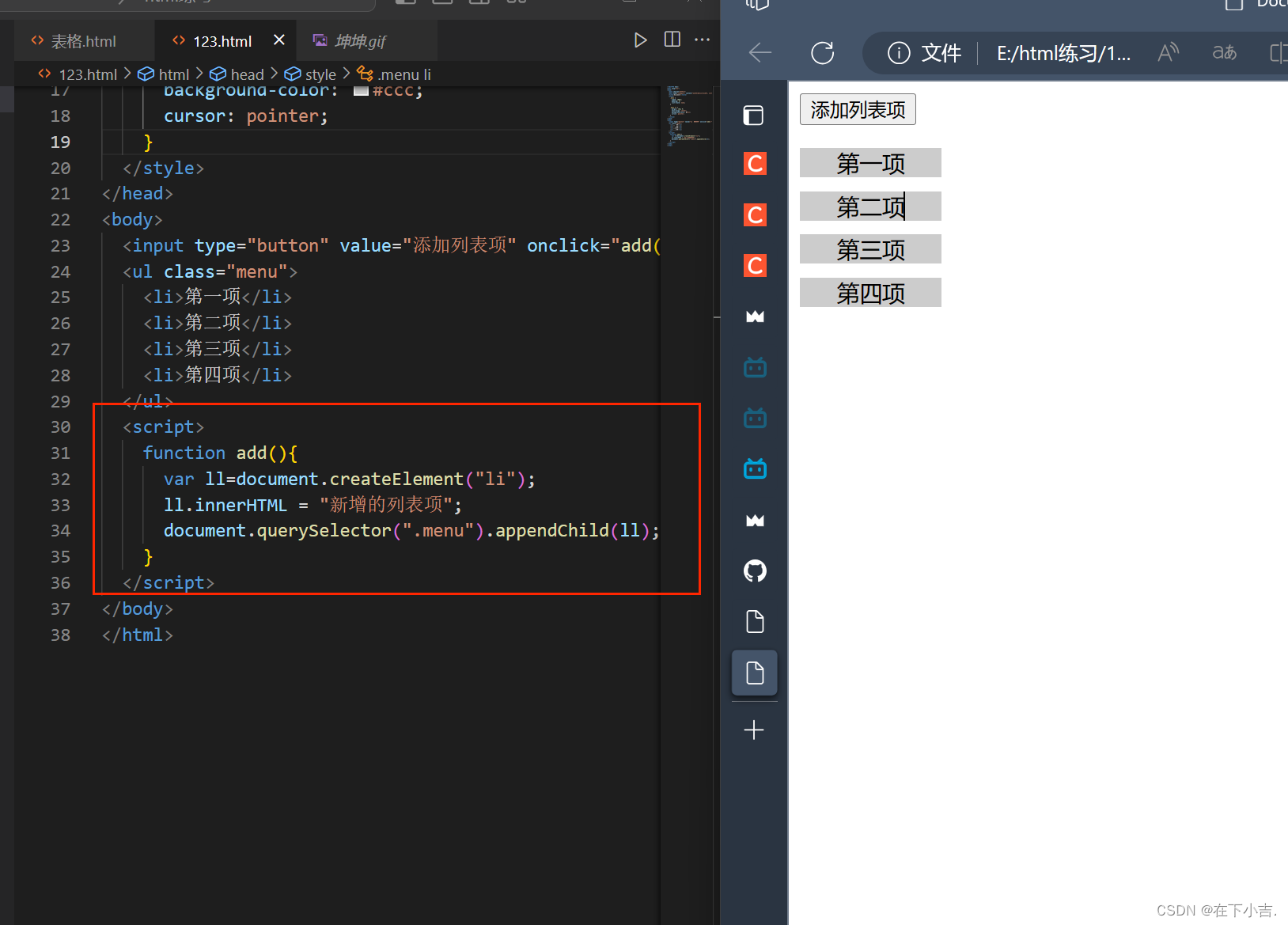
⭐添加点击后框框变成红色的效果
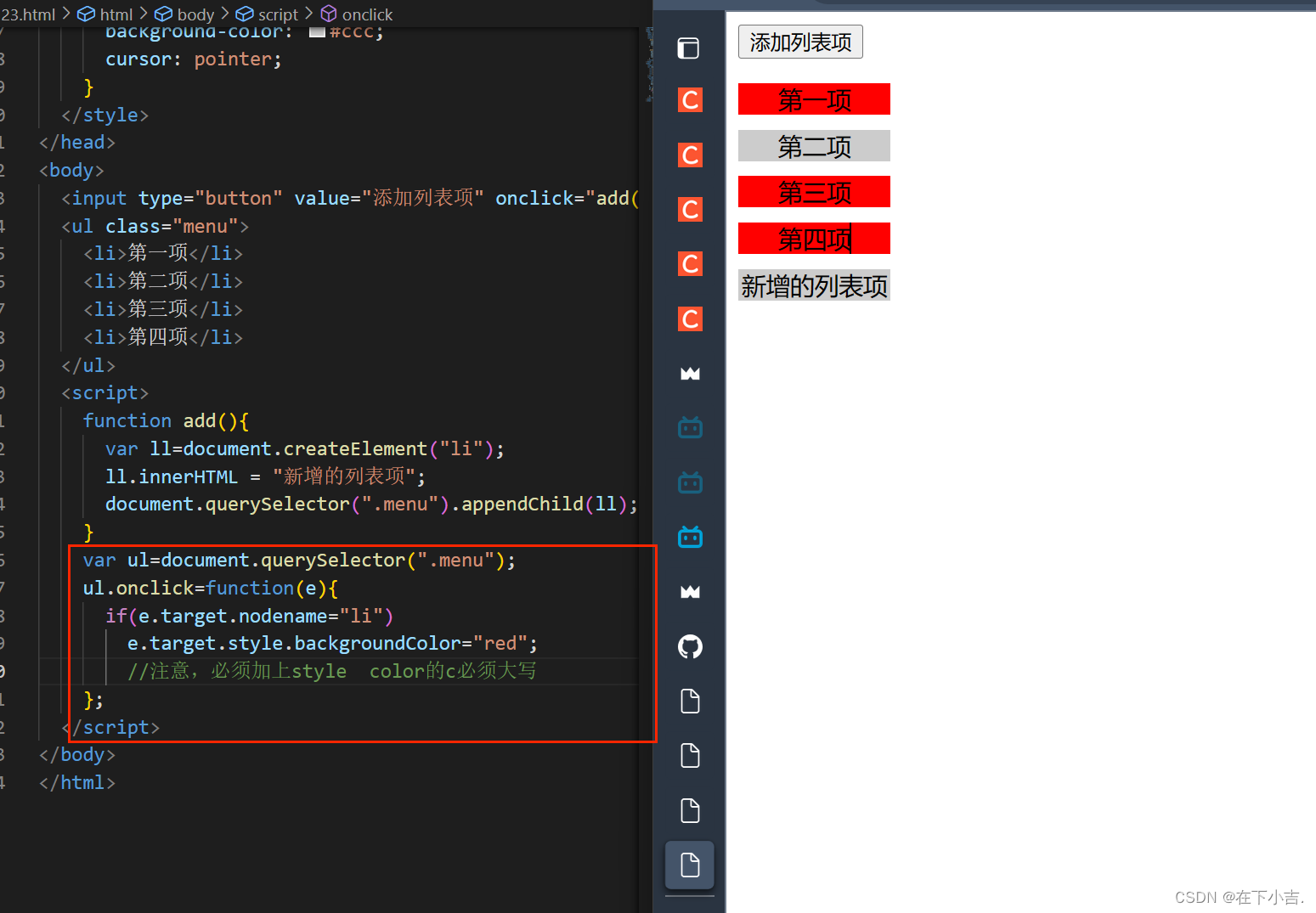
if (e.target.nodeName == ‘LI’)
这个LI必须大写
🍔轮播图
<!DOCTYPE html>
<html>
<head>
<meta charset="UTF-8" />
<title>轮播图效果演示</title>
<style>
.wrapper {
width: 100%;
height: 400px;
margin: 10px auto;
border: 1px solid red;
position: relative;
/*父元素使用相对定位的目的:(1)保持父元素不动;(2)绝对定位的子元素偏移量是相对父元素*/
overflow: hidden;
}
.wrapper img {
width: 100%;
height: 100%;
}
.links {
position: absolute;
left: 50%;
bottom: 5px;
transform: translate(-50%);
}
.links a {
display: inline-block;
width: 150px;
height: 20px;
line-height: 20px;
/*文字垂直居中*/
font-size: 14px;
text-align: center;
/*文字水平居中*/
text-decoration: none;
}
.a1 {
/*没有选中的样式*/
color: #FFF;
background-color: red;
}
.a2 {
/*选中的样式*/
color: #000;
background-color: yellow;
}
</style>
</head>
<body>
<!-- 网页开发中,书写css常用class选择器 -->
<div class="wrapper">
<div class="container">
<img src="1.jpg" id="img1" />
<img src="2.jpg" id="img2" style="display:none;" />
<img src="3.jpg" id="img3" style="display:none;" />
<img src="4.jpg" id="img4" style="display:none;" />
</div>
<div class="links">
<a href="javascript:;" class="a2" id="btn1" onmouseover="show(1)" onmouseout="star()">1</a>
<a href="javascript:;" class="a1" id="btn2" onmouseover="show(2)" onmouseout="star()">2</a>
<a href="javascript:;" class="a1" id="btn3" onmouseover="show(3)" onmouseout="star()">3</a>
<a href="javascript:;" class="a1" id="btn4" onmouseover="show(4)" onmouseout="star()">4</a>
</div>
</div>
<script>
var NowImg=2;
var MaxImg=4;
var timer;
var imgs=document.querySelectorAll(".container img");
var links=document.querySelectorAll(".links a");
function show(){
if(arguments.length>0){
NowImg=arguments[0];
window.clearInterval(timer);
}
for(var i=1;i<=MaxImg;i++){
if(i==NowImg){
imgs[i-1].style.display="block";
links[i-1].className="a2";
}else{
imgs[i-1].style.display="none";
links[i-1].className="a1";
}
}
if(NowImg==MaxImg) NowImg=1;
else NowImg++;
}
timer=setInterval(show,1500);
function star(){
timer=setInterval(show,1500);
}
</script>
</body>
</html>
🎄分析
arguments.length
- 是传入的参数
- arguments[0]表示函数调用时
传入的第一个参数
imgs[i-1].style.display="block";
links[i-1].className="a2";
- 通过将图片元素的显示样式设置为 “block”,该图片元素将变为可见状态,并在页面上显示出来。同时,将链接元素的类名设置为 “a2”,可以应用相应的样式,以突出显示当前选中的链接。
这段代码中, links[i-1].className="a2";有什么用
- 在这段代码中,.a1 类名定义了非选中状态的样式,而 .a2 类名定义了选中状态的样式。
- 在这段代码中,.a1 类名定义了非选中状态的样式,而 .a2 类名定义了选中状态的样式。
timer=setInterval(show,1500);
function star(){
timer=setInterval(show,1500);
}
- 使用setInterval函数创建一个定时器,每1500毫秒(1.5秒)调用一次show()函数,实现图片的自动轮播效果。
- star()函数用于重新启动定时器,当鼠标离开时重新开始自动轮播
onmouseover="show(1)"有什么用
- 具体来说,在链接元素上使用 onmouseover 属性,当鼠标悬停在链接元素上时,会触发 show() 函数,并将相应的参数(例如 1、2、3 或 4)传递给它。这样做的目的是在鼠标悬停在链接上时,切换到对应索引的图片和链接的显示状态,以提供与用户交互的反馈。
- 在这段代码中,οnmοuseοver=“show(4)” 表示当鼠标悬停在具有 id=“btn4” 的链接元素上时,会调用 show() 函数,并将参数值 4 传递给它。这样,当鼠标悬停在该链接上时,会显示第四张图片,并将该链接的类名设置为 “a2”,表示当前选中状态。
onmouseout="star()"有什么用
- onmouseout 是一个事件属性,用于在鼠标移出元素时触发相应的事件处理程序。在给定的代码中,onmouseout 用于调用名为 star() 的函数,这样做的目的是在鼠标移出链接时重新开始轮播图的自动播放。
🍔效果如图
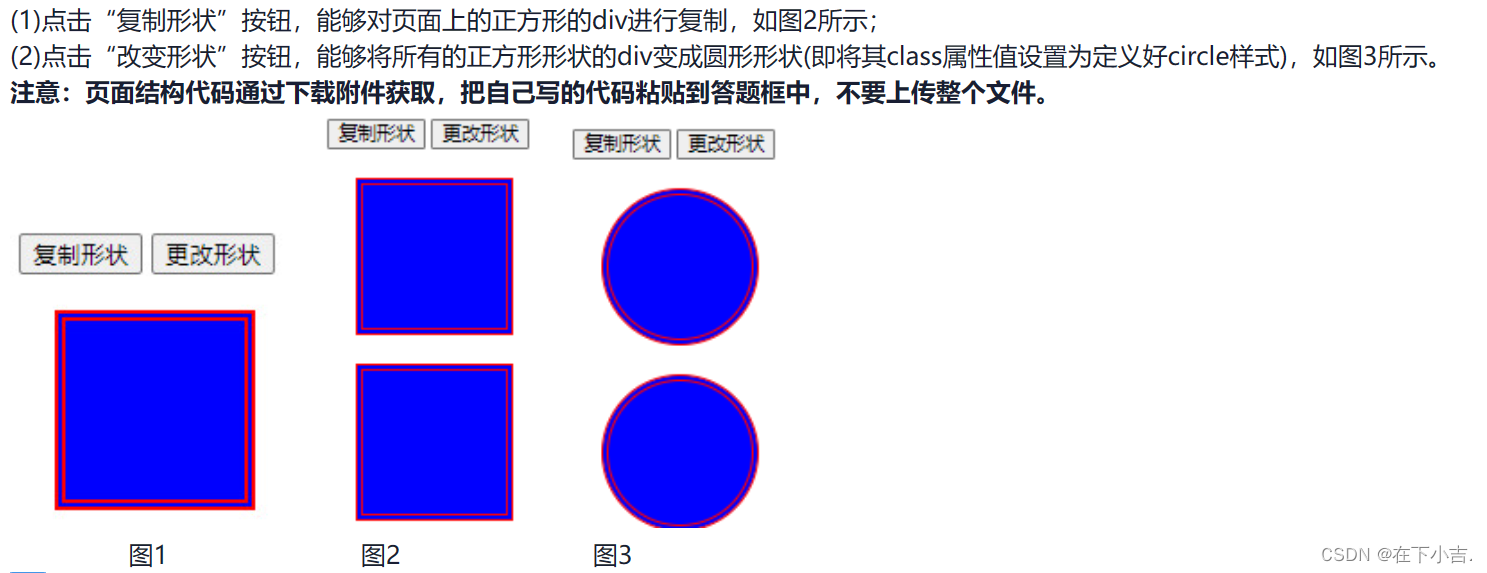
<!DOCTYPE html>
<html>
<head>
<meta charset="UTF-8">
<title>Document</title>
<style>
.shape {
width: 100px;
height: 100px;
margin: 20px;
background-color: blue;
border: 6px double red;
}
.circle {
border-radius: 50%;
}
</style>
</head>
<body>
<input type="button" value="复制形状" onclick="cloneShape();">
<input type="button" value="更改形状" onclick="changeShape();">
<div class="shape" id="div"></div>
</body>
<script>
function cloneShape() {
var originalShape = document.getElementById("div");
var clonedShape = originalShape.cloneNode(true);
document.body.appendChild(clonedShape);
}
function changeShape() {
var shapes = document.getElementsByClassName("shape");
for (var i = 0; i < shapes.length; i++) {
shapes[i].classList.toggle("circle");
}
}
</script>
</html>
🥰如果大家有不明白的地方,或者文章有问题,欢迎大家在评论区讨论,指正🥰
